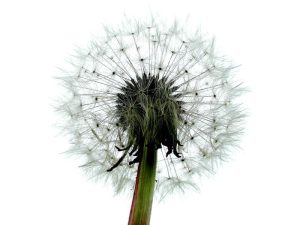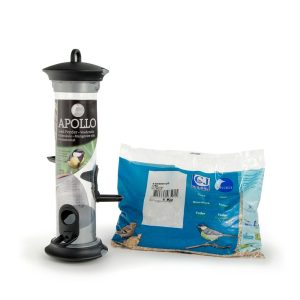All over Ireland gardeners are on a mission to eradicate weeds… but is there a different approach that can help the gardener AND help Ireland’s wildlfie?
****
The very mention of them can send gardeners into spasm. Throughout summer well into autumn we fight a never-ending battle with weeds. It’s a futile exercise, because we know the seeds released this year mean the weeds will be back to haunt us next spring.
Rather than attempting mass genocide in the garden, I’m a great advocate of the live and let live approach to weeds. Yes, I do my chemical-free best to stop them over-running the polytunnel, taking over the lawn and hijacking the vegetable patch… but in other parts of the garden they’re left to thrive. Weeds are amazing — it just takes a subtle shift in mindset to really appreciate them, that’s all.
When you think about it weeds are simply plants we haven’t cultivated, growing in places we don’t necessarily want them to grow. One of the things that makes weeds so troublesome in the garden is that they are so successful. In sharp contrast to their cultivated cousins our garden “weeds” (aka native wildflowers), have evolved over millions of years to survive and thrive in Ireland’s unique climate, geology and soil chemistry. They are better adapted than, and therefore outcompete, the cultivated plants we introduce into our gardens.
Most common weeds are colonisers: nature’s front line troops in the battle to reclaim waste ground and bare earth. In nature these colonising plants play a crucial role, preparing and enriching the soil for a succession of longer-term species. They lay the foundation for a healthy, sustainable ecosystem. That may not always be desirable on your freshly turned flower bed… but it is pretty amazing. With a little bit of imagination and a tiny bit of effort it’s a trait we can harness to benefit our gardens and the native wildlife they support.
Perhaps the biggest hurdle to overcome in this is years of conditioning we get to see weeds as the enemy: something to be eradicated and destroyed at all costs. If we can look beyond our misguided preconceptions, and start to work with nature instead of striving against it, we can strike a balance that works well for our gardens and for wildlife.
We remove nutrients from the garden all the time. Pulling weeds and harvesting crops, by definition, removes the nutrients those plants have invested in growth and development out of the garden ecosystem. Obviously we can’t keep taking things out of the soil without putting something back in if we want our gardens to stay healthy. Weeds can help us to do that in a natural and sustainable way.
 Weeds like the stinging nettle (Urtica dioica), the dandelion (Taraxacum officinale) and coltsfoot (Tussilago farfara) are all deep-rooted species that specialise in drawing nutrients from deep in the soil, where they are locked away from most garden plants. It’s a trait that makes them very effective colonisers of nutrient poor ground. By letting weeds grow in unused corners of the garden, cutting them back occasionally, and using the nutrient-rich foliage for compost, organic mulch or liquid plant feed we can recycle nutrients back into the soil making them available to our garden plants.
Weeds like the stinging nettle (Urtica dioica), the dandelion (Taraxacum officinale) and coltsfoot (Tussilago farfara) are all deep-rooted species that specialise in drawing nutrients from deep in the soil, where they are locked away from most garden plants. It’s a trait that makes them very effective colonisers of nutrient poor ground. By letting weeds grow in unused corners of the garden, cutting them back occasionally, and using the nutrient-rich foliage for compost, organic mulch or liquid plant feed we can recycle nutrients back into the soil making them available to our garden plants.
Other weeds have properties that make them excellent companion plants. Native wildflowers (aka weeds) tend to be better at attracting pollinating insects, but go on to perform the essential service of pollinating our garden plants too. Some of them, like hoverflies, have larvae that feed voraciously on garden pests like aphids, helping to keep them under control naturally.
Plants like like clovers (Trifolium sp.) can form a close-growing mat — a “living mulch” that leaves little room for other weeds. They also fix nitrogen from the air, enriching the soil for garden plants. Others, like Yarrow (Achillea millefolium), release chemicals that actively repel insect pests, helping to keep them away from our crop plants.
Finally, let’s not forget the role weeds play in attracting and offering refuge to the incredible diversity of wildlife that helps make our gardens all the richer. Insects, other invertebrates, birds and mammals ultimately depend on our native plants for their survival. Some of those they rely on the most are the ones we routinely eradicate as garden weeds.
Weeds are much more than the garden pests we routinely label them as. Try making a bit of room for native wildflowers in forgotten corners of your garden and it won’t be long before you start to notice more wildlife. That’s good news for you, good news for your garden and really good news for your local wildlife.










3 comments
Chris Betts
So – please – what can I actively sow to fill in the spaces I’ve just cleared of tall grass, dock, nettles (don’t worry, there are plenty elsewhere!) and massive buttercups between some fruit trees? The trees are about a metre in from the overgrown wall/hedge/gorse/hawthorne which separates us from the farm next door. The boundary runs north/south and we’re about 100 metres from the cliff near Tramore in Waterford. I have put a deep ‘apron’ of bark mulch around the boles of the trees themselves. I thought of planting some wild garlic and native bluebells, then sowing clover. What d’you think?
Calvin Jones
That sounds good Chris — try and stick with natives as much as you can, as they tend to be better for insects… and don’t be too concerned about the occasional wild interloper encroaching on the space (just stay on top of anything too aggressive).
You can buy wildflower seed mixes online, but I’d be inclined to look / ask around locally first to see what’s available.
Best of luck with it.
Chris Betts
Thanks, Calvin; much appreciated. There is lots of wild garlic within a couple of miles of me, but I believe it’s not permitted to take from the wild, so unless I can find some commercially locally, I’ll buy online. I’ll sow some foxglove seed too (our own) – they had to come out in order to dig out the perennial weed roots, but I love them!